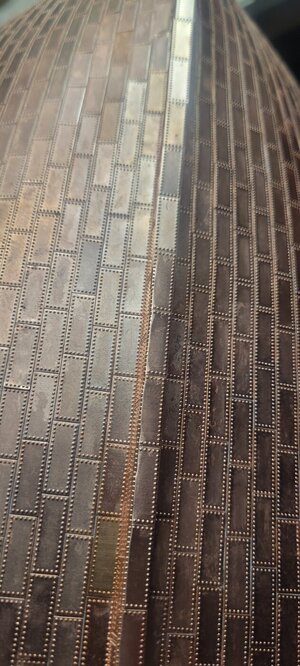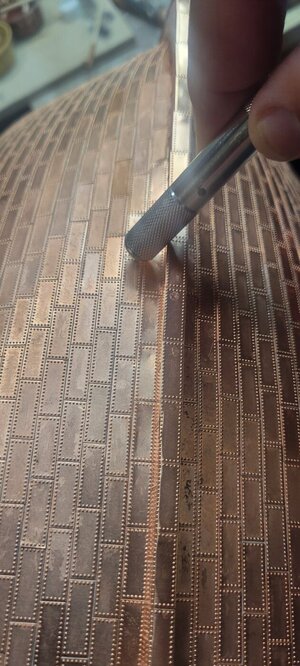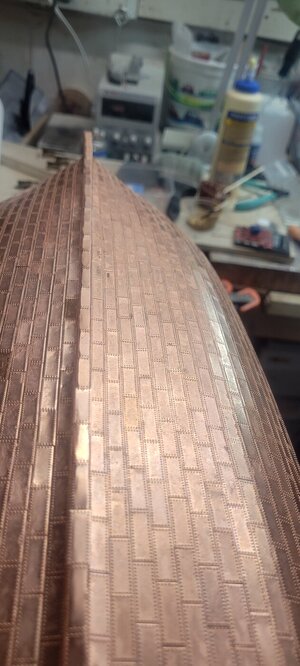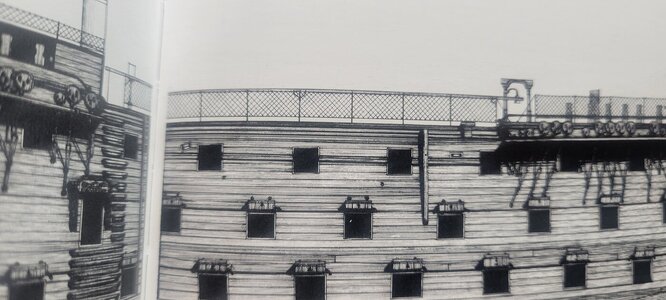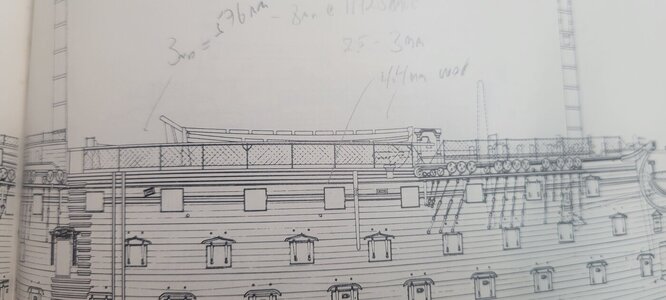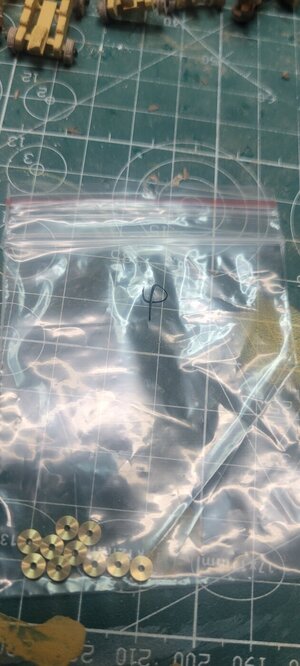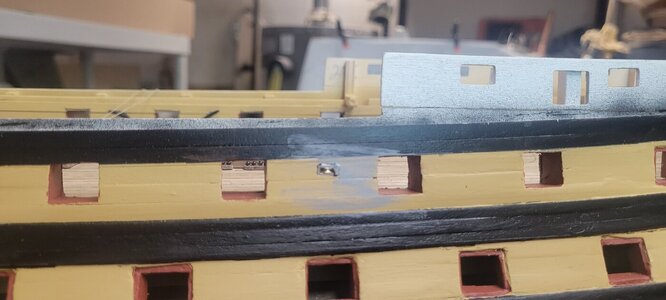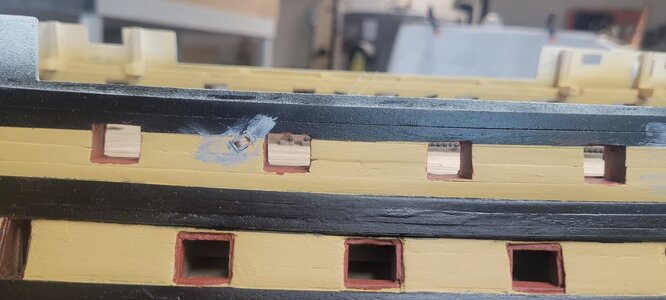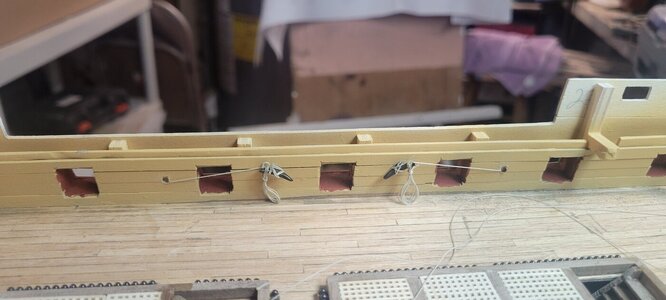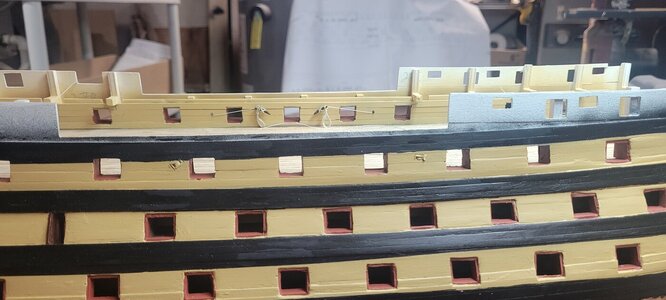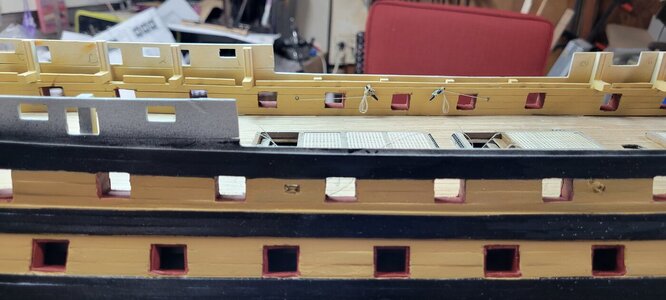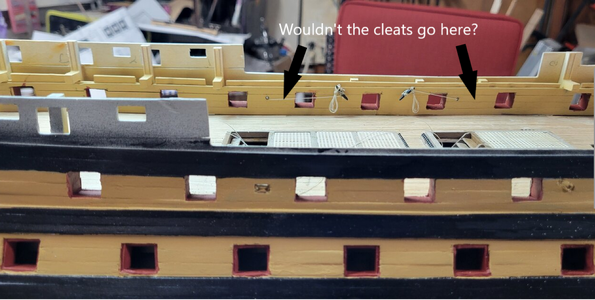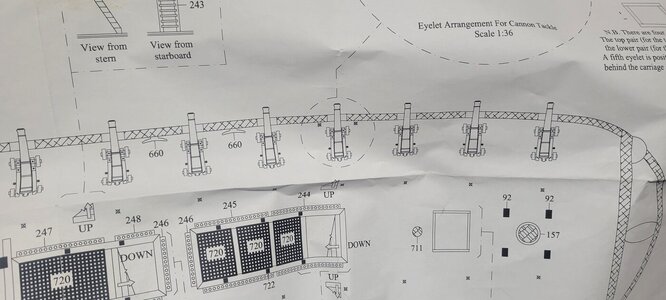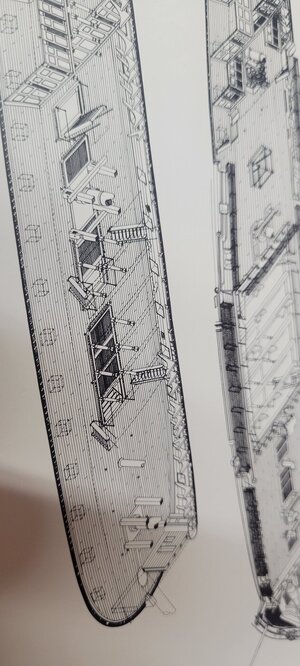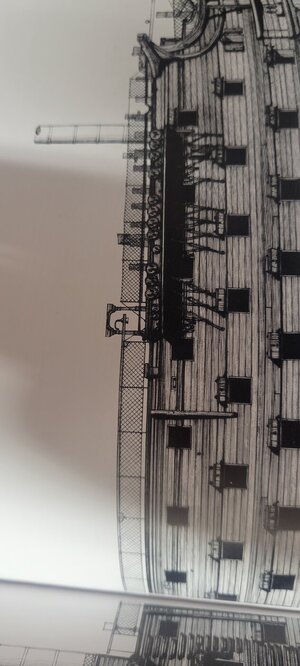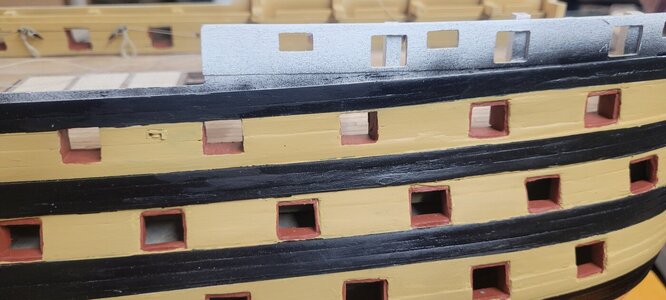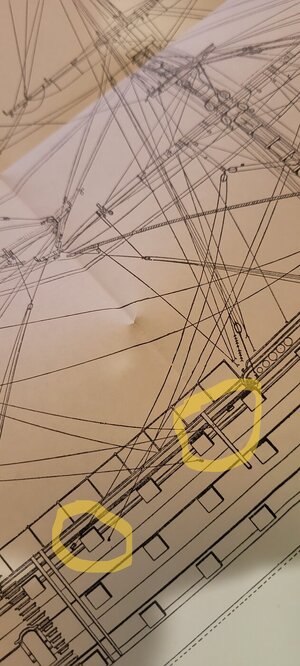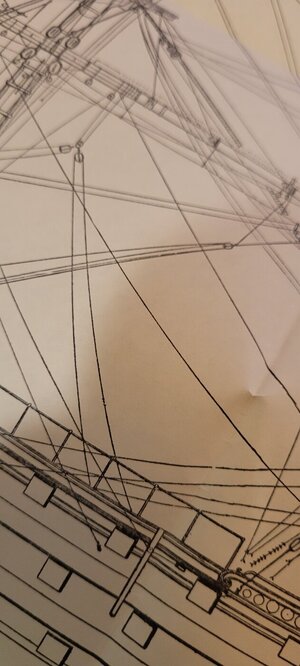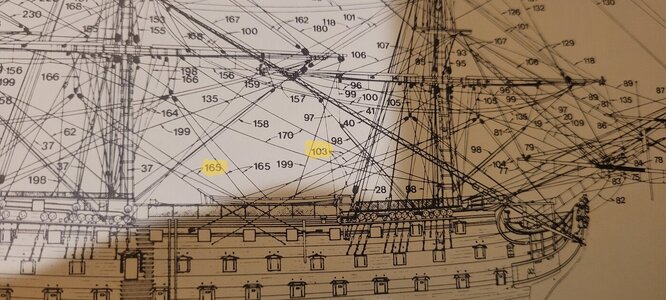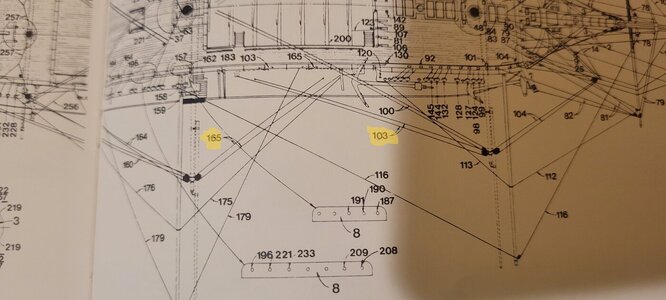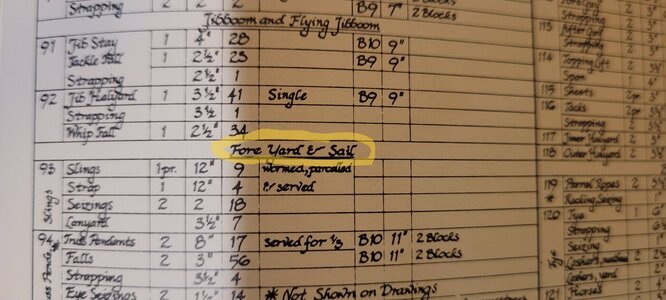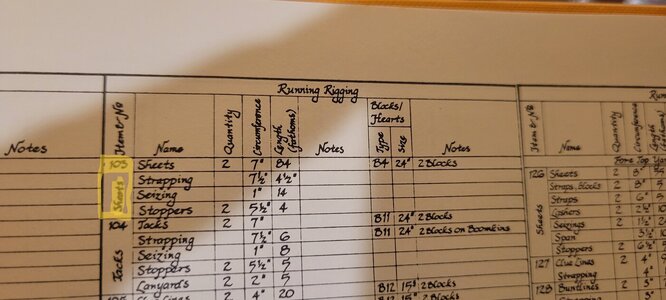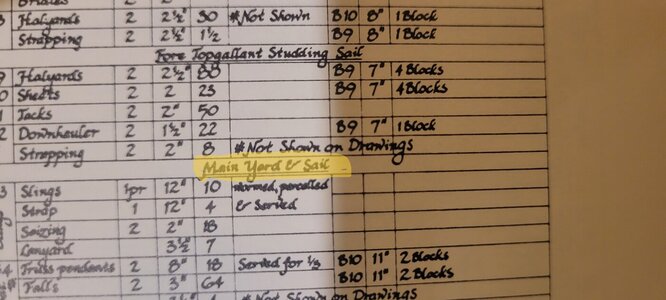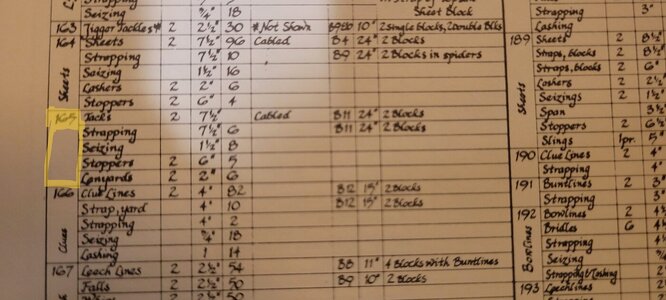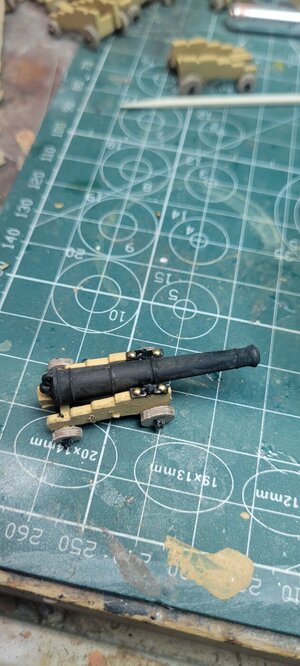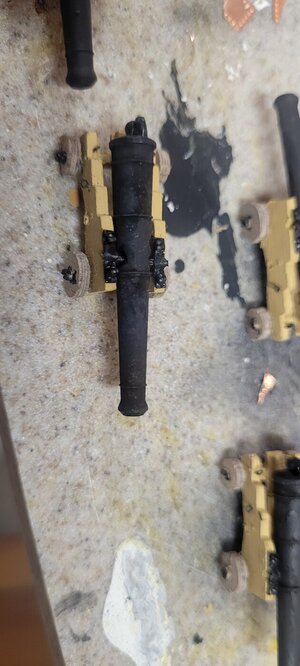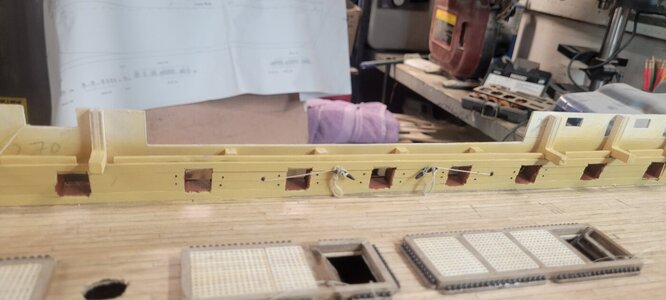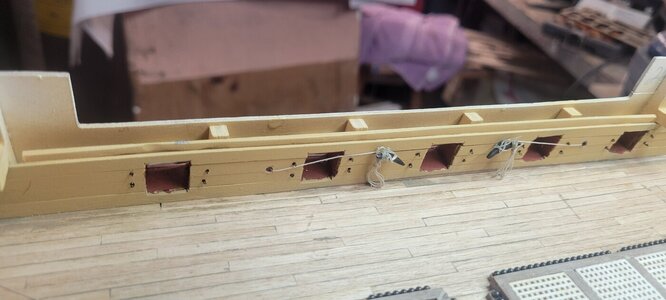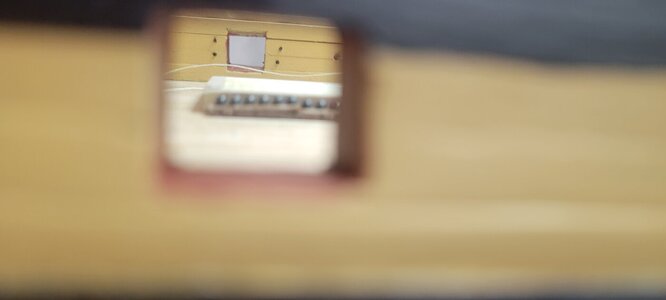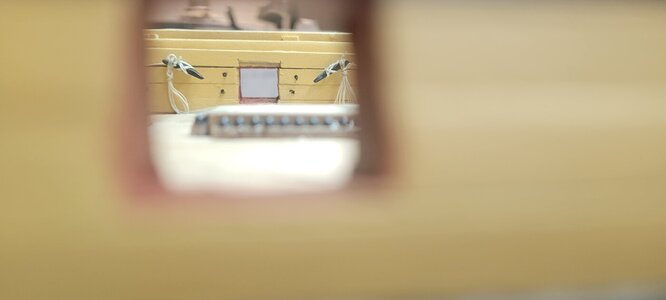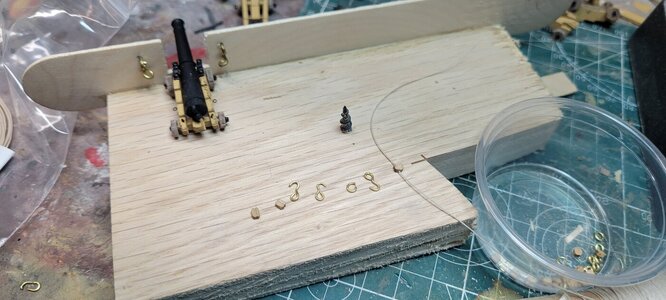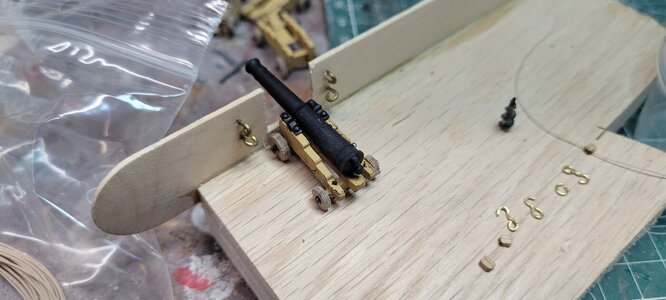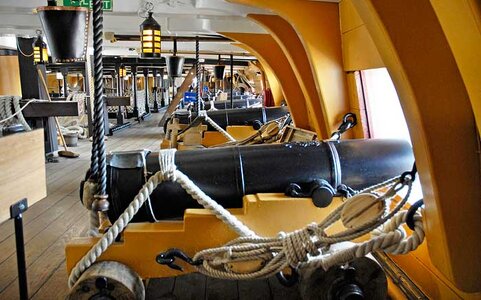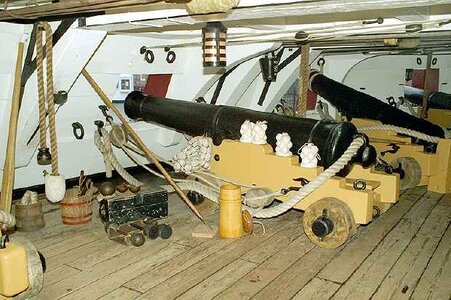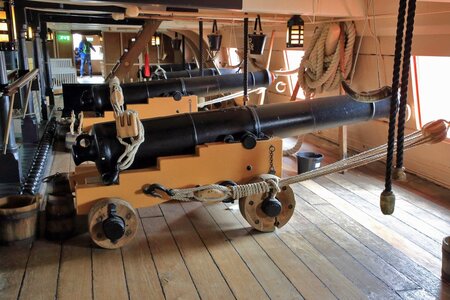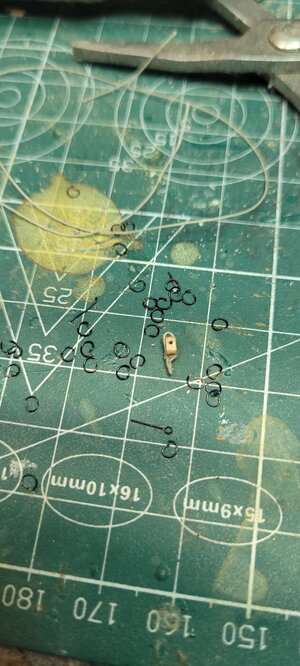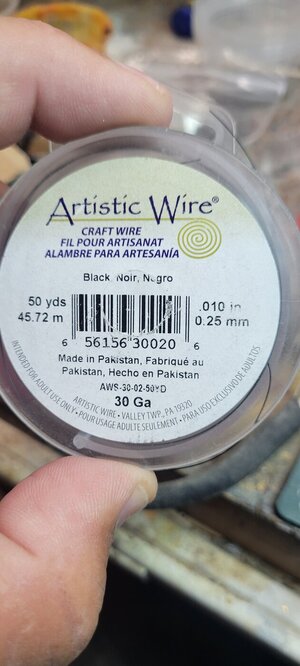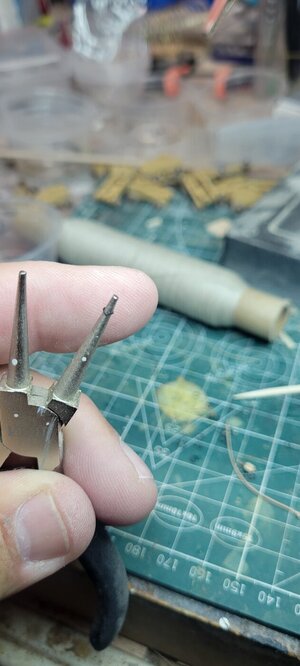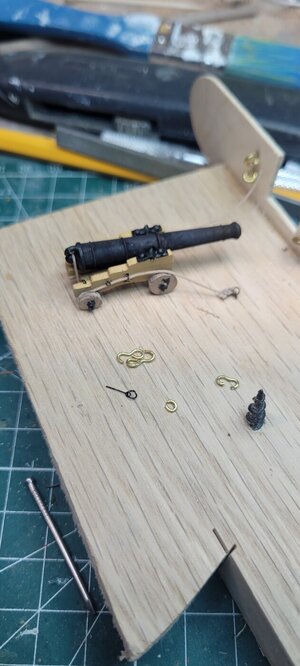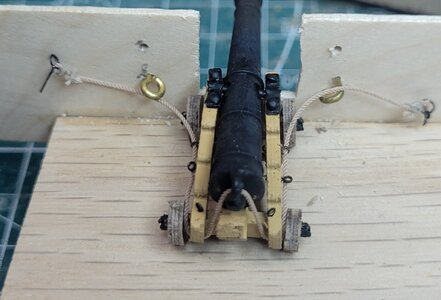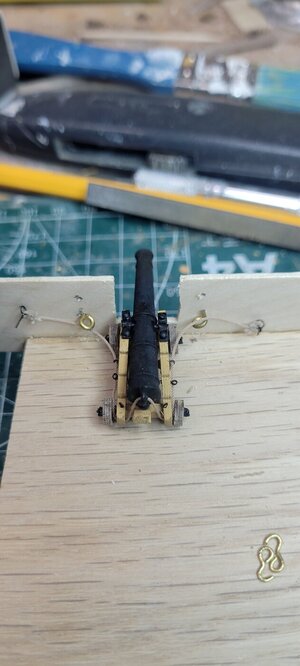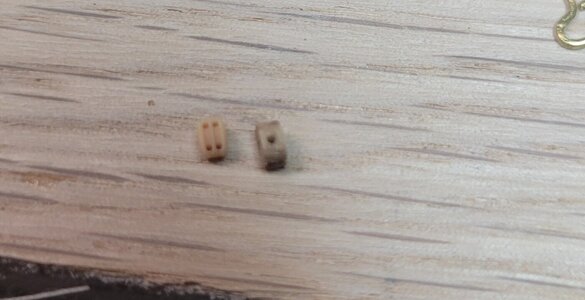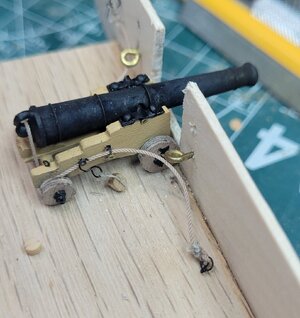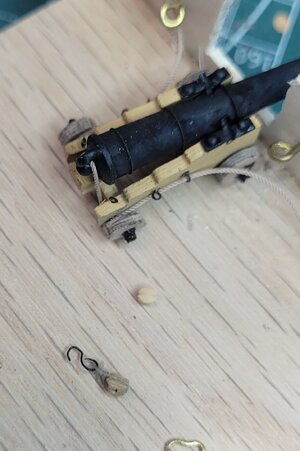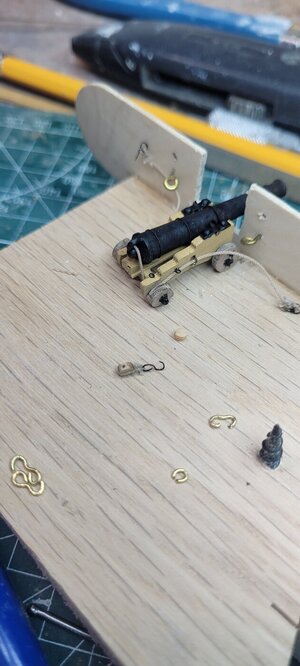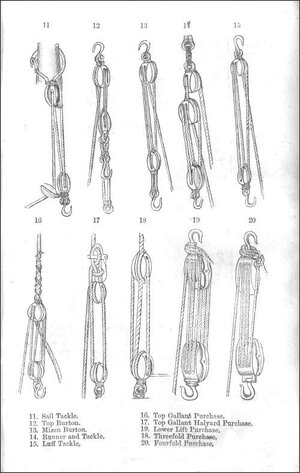- Joined
- Oct 21, 2022
- Messages
- 286
- Points
- 238

An hour here, an hour there!
I blackened the cannons and all of the various bits that are attached to the cannon bases. It's a love hate result.
I think you have to polish the finished result with a clean cloth, but doing so will rub off some of the black, which will require you to dip them again.
Now pictures, as always will enhance the reality these are miniatures (built by a rookie) and will enhance my flaws.
But from farther away, they look fine.
Drilling the holes for the various eyelets is tough. .5mm bits are very thin and if you are not careful, you will break them, I think I started with 5 or 6 of them and they are all gone!!!
Also, the directions require a .7mm hole for the bolts that hold the trunnions in place. It was almost impossible to do this with any precision.
I have a drill press and suppose I could have rigged that up and secured each cannon base in place....I didn't bother.
My thinking is that once painted, they blend in. Once I am done creating the 10 showcase cannons I might consider cutting the heads off the pins that were meant to hold the trunnions in place and just glue them in the holes for the aesthetics of it all!
I did have to touch up the cannon breeches because the blackening agent doesn't work on CA glue, but I knew that was going to happen.
To be honest, for those that want to go with a paint option, the dried result looks great and I would guess that painting the cannons and ensuring they are drip free will look just fine!
The forward eyelets are there to hold a ring that the breeching rope runs through as it goes from the bulkhead wall to the cannon, around the back and back through a ring on the other side on its way to the other side and bulkhead. I have a way to make rings, just not sure yet what size wire to use. The wire I used to make the breeching loops is just too thick. I think I have some very thin brass wire. I'll keep you posted.
I also installed the 3 crooked ladders I made in addition to adding the lower stanchions for the rope railings. That was a bit tough to do because of the angle of the stairs in relation to the upright angle needed for the stanchion. Also, trying to guesstimate how much thread to leave for the finished railings was tough. Hopefully I guessed right!
Oh yes, the manual asks for .25mm thread for the rope railings. Once blackened or even painted, there is NO WAY to get a thread that thick through the stanchion holes. That is where I broke my last .25mm drill trying. So I am using the .1mm thread....at least for these railings that are a but lower.
Perhaps I will see what I can do to the stanchions for the next deck BEFORE I remove them from the sprue.
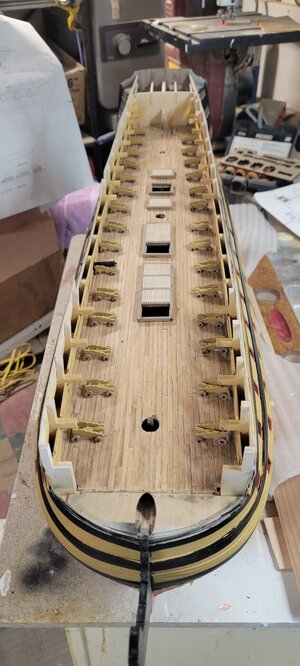
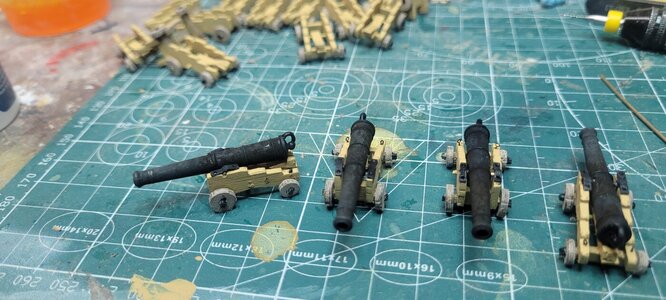
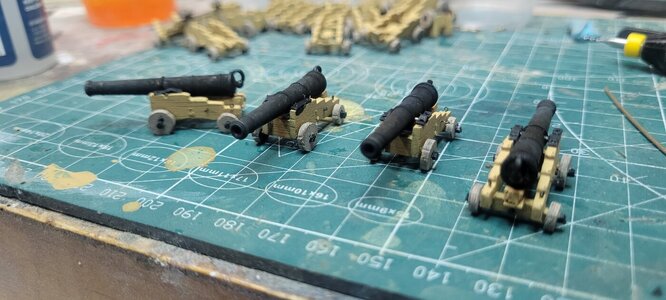
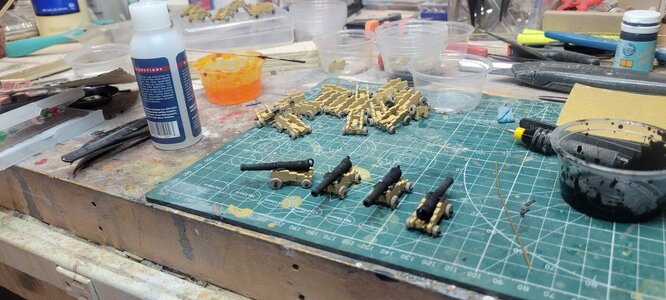
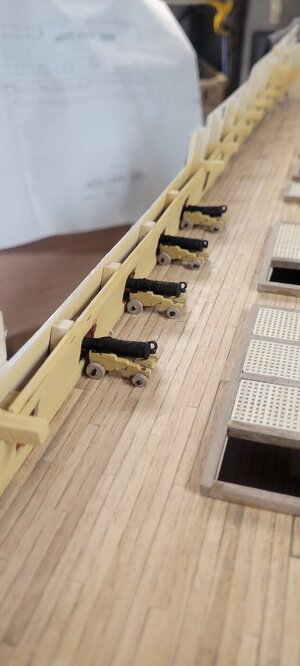
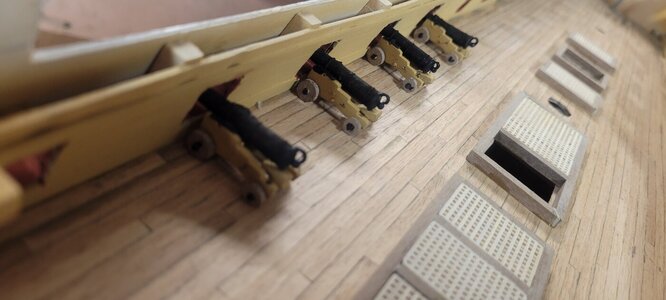
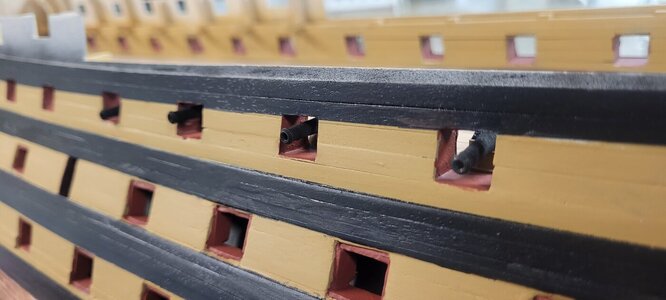
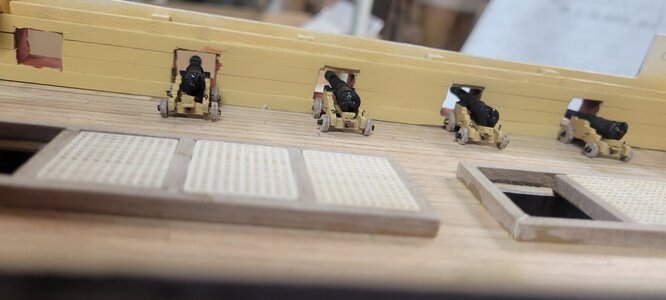
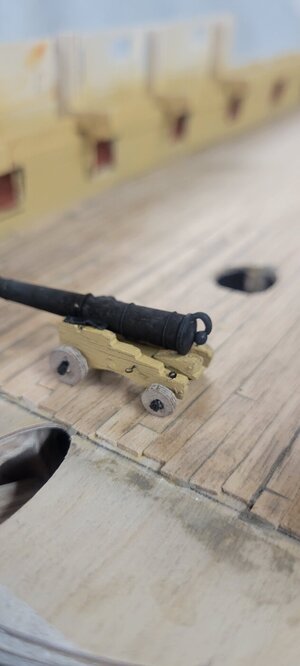
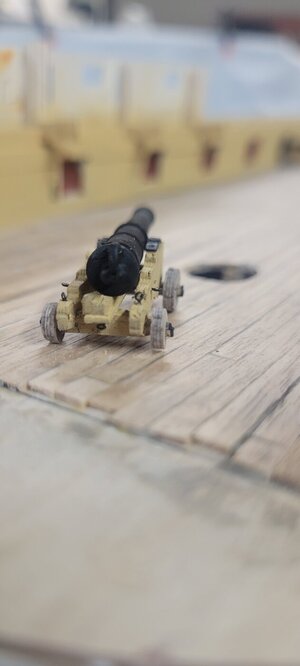
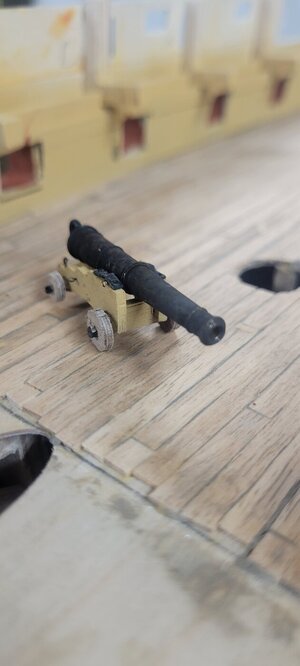
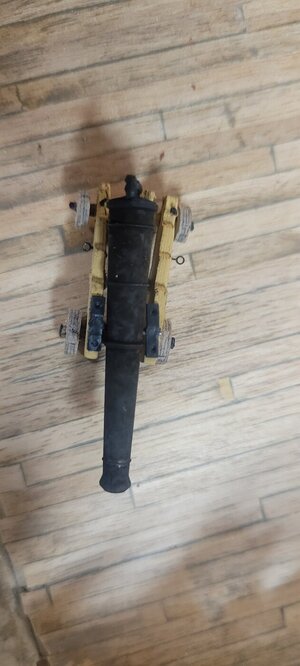
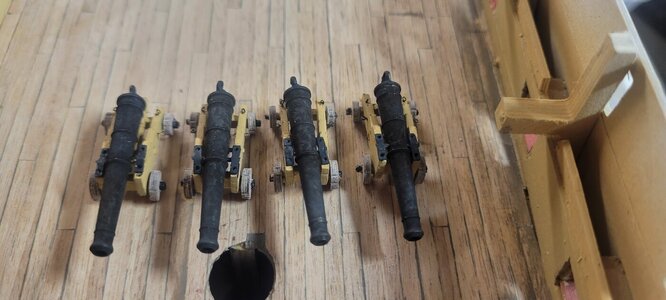
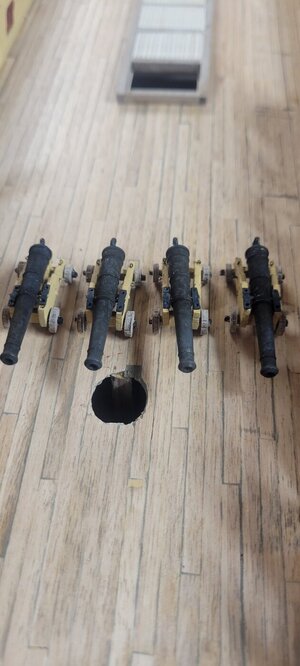
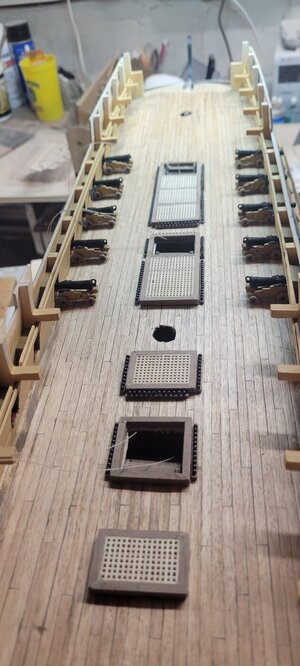
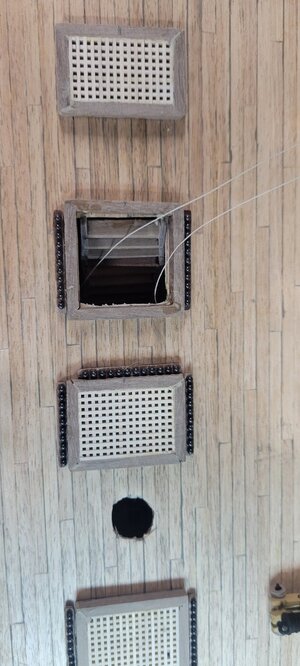
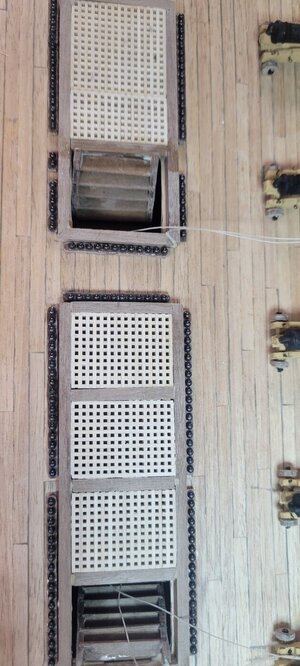
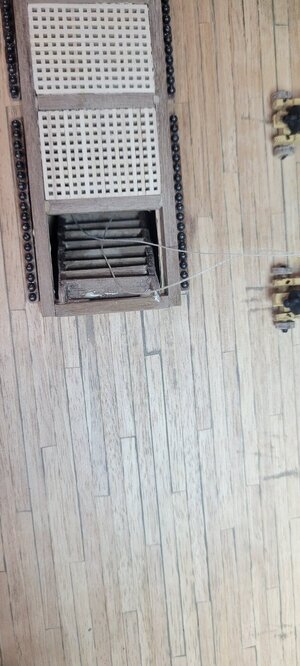
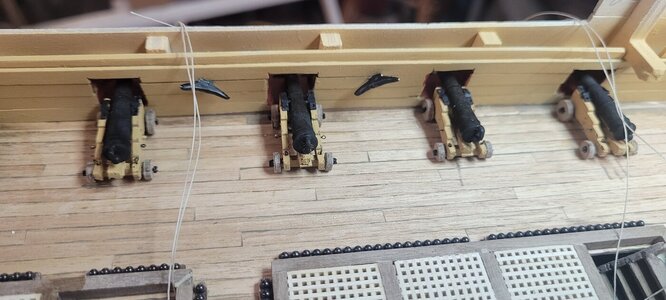
I blackened the cannons and all of the various bits that are attached to the cannon bases. It's a love hate result.
I think you have to polish the finished result with a clean cloth, but doing so will rub off some of the black, which will require you to dip them again.
Now pictures, as always will enhance the reality these are miniatures (built by a rookie) and will enhance my flaws.
But from farther away, they look fine.
Drilling the holes for the various eyelets is tough. .5mm bits are very thin and if you are not careful, you will break them, I think I started with 5 or 6 of them and they are all gone!!!
Also, the directions require a .7mm hole for the bolts that hold the trunnions in place. It was almost impossible to do this with any precision.
I have a drill press and suppose I could have rigged that up and secured each cannon base in place....I didn't bother.
My thinking is that once painted, they blend in. Once I am done creating the 10 showcase cannons I might consider cutting the heads off the pins that were meant to hold the trunnions in place and just glue them in the holes for the aesthetics of it all!
I did have to touch up the cannon breeches because the blackening agent doesn't work on CA glue, but I knew that was going to happen.
To be honest, for those that want to go with a paint option, the dried result looks great and I would guess that painting the cannons and ensuring they are drip free will look just fine!
The forward eyelets are there to hold a ring that the breeching rope runs through as it goes from the bulkhead wall to the cannon, around the back and back through a ring on the other side on its way to the other side and bulkhead. I have a way to make rings, just not sure yet what size wire to use. The wire I used to make the breeching loops is just too thick. I think I have some very thin brass wire. I'll keep you posted.
I also installed the 3 crooked ladders I made in addition to adding the lower stanchions for the rope railings. That was a bit tough to do because of the angle of the stairs in relation to the upright angle needed for the stanchion. Also, trying to guesstimate how much thread to leave for the finished railings was tough. Hopefully I guessed right!
Oh yes, the manual asks for .25mm thread for the rope railings. Once blackened or even painted, there is NO WAY to get a thread that thick through the stanchion holes. That is where I broke my last .25mm drill trying. So I am using the .1mm thread....at least for these railings that are a but lower.
Perhaps I will see what I can do to the stanchions for the next deck BEFORE I remove them from the sprue.






















